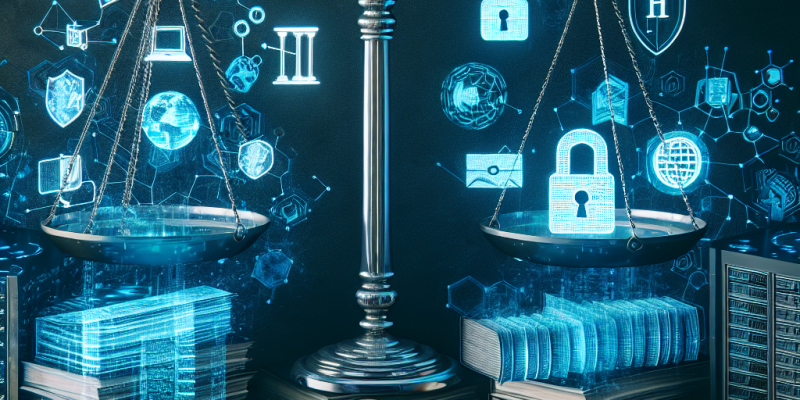Regulatory Changes and Their Impact on Cybersecurity Practices in 2025

As we move through 2025, recent regulatory changes are reshaping the landscape of cybersecurity practices worldwide. Governments and organizations are recognizing the critical need for robust cybersecurity measures due to the increasing frequency and sophistication of cyber threats. This article explores the significant regulatory shifts and their implications for businesses, individuals, and the broader cybersecurity ecosystem.
New Regulations on Data Privacy
One of the most notable changes in 2025 is the introduction of stricter data privacy laws. Many countries have adopted laws similar to the General Data Protection Regulation (GDPR) from the European Union. These new regulations require organizations to be more transparent about how they collect, use, and store personal data.
For businesses, this means they must invest in better data protection technologies and practices. Organizations that fail to comply can face heavy fines, which can be damaging financially and reputationally. As a result, many companies are now prioritizing cybersecurity in their overall business strategy.
Increase in Cybersecurity Standards
In response to rising cyber threats, regulatory bodies across the globe are setting higher cybersecurity standards. These standards outline specific requirements for protecting sensitive data, implementing secure software development practices, and conducting regular security assessments. Companies in critical sectors, such as finance and healthcare, are particularly affected, as they must meet rigorous standards to protect customer information.
To comply with these regulations, businesses are adopting more advanced security measures such as multi-factor authentication, encryption, and regular training for employees on cybersecurity awareness. This shift is fostering a culture of security within organizations, making it a fundamental aspect of their operations.
Impact on Small and Medium Enterprises (SMEs)
The new regulations also impact small and medium-sized enterprises (SMEs). Often, SMEs may struggle to meet the costs of compliance, leading to concerns that they may be left behind in the push for cybersecurity improvements.
To address this issue, some governments are offering support programs, such as grants or low-interest loans, to help SMEs enhance their cybersecurity practices. Additionally, many industry alliances are forming to share resources and best practices, allowing smaller companies to learn from larger organizations.
The Role of Technology in Compliance
Technology plays a critical role in helping organizations comply with new regulations. Automation tools are now available to assist companies in tracking data usage, generating reports, and identifying vulnerabilities in their systems. This not only simplifies the compliance process but also enhances overall cybersecurity.
Moreover, advancements in artificial intelligence (AI) and machine learning are enabling organizations to predict and respond to cyber threats more efficiently. These technologies help companies stay ahead in a constantly evolving threat landscape, making it easier to adhere to new regulations.
Conclusion
As regulatory changes continue to shape the cybersecurity landscape in 2025, organizations must adapt to meet the new demands. Stricter data privacy laws, higher cybersecurity standards, and the role of technology are all influencing how businesses manage their cyber risks.
For many organizations, these changes present challenges, but they also offer opportunities to strengthen their cybersecurity practices. As we move forward, the commitment to robust cybersecurity not only protects businesses but also builds trust with customers in an increasingly digital world. Embracing these changes now will ensure that businesses are prepared for the future of cybersecurity.














